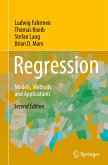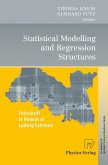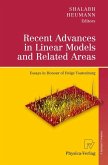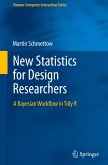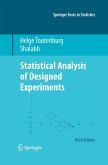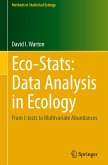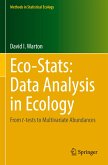Now in its second edition, this textbook provides an applied and unified introduction to parametric, nonparametric and semiparametric regression that closes the gap between theory and application. The most important models and methods in regression are presented on a solid formal basis, and their appropriate application is shown through numerous examples and case studies. The most important definitions and statements are concisely summarized in boxes, and the underlying data sets and code are available online on the book's dedicated website. Availability of (user-friendly) software has been a major criterion for the methods selected and presented.
The chapters address the classical linear model and its extensions, generalized linear models, categorical regression models, mixed models, nonparametric regression, structured additive regression, quantile regression and distributional regression models. Two appendices describe the required matrix algebra, as well as elements of probability calculus and statistical inference.
In this substantially revised and updated new edition the overview on regression models has been extended, and now includes the relation between regression models and machine learning, additional details on statistical inference in structured additive regression models have been added and a completely reworked chapter augments the presentation of quantile regression with a comprehensive introduction to distributional regression models. Regularization approaches are now more extensively discussed in most chapters of the book.
The book primarily targets an audience that includes students, teachers and practitioners in social, economic, and life sciences, as well as students and teachers in statistics programs, and mathematicians and computer scientists with interests in statistical modeling and data analysis. It is written at an intermediate mathematical level and assumes only knowledge of basic probability, calculus, matrix algebra and statistics.
The chapters address the classical linear model and its extensions, generalized linear models, categorical regression models, mixed models, nonparametric regression, structured additive regression, quantile regression and distributional regression models. Two appendices describe the required matrix algebra, as well as elements of probability calculus and statistical inference.
In this substantially revised and updated new edition the overview on regression models has been extended, and now includes the relation between regression models and machine learning, additional details on statistical inference in structured additive regression models have been added and a completely reworked chapter augments the presentation of quantile regression with a comprehensive introduction to distributional regression models. Regularization approaches are now more extensively discussed in most chapters of the book.
The book primarily targets an audience that includes students, teachers and practitioners in social, economic, and life sciences, as well as students and teachers in statistics programs, and mathematicians and computer scientists with interests in statistical modeling and data analysis. It is written at an intermediate mathematical level and assumes only knowledge of basic probability, calculus, matrix algebra and statistics.
From the book reviews:
"This is a very useful book for researchers, in particular those often faced with data not suited to the classical linear model, and for teachers who wish to motivate good students with an introduction to the wonderful and diverse world of modern statistical modeling. The use of interesting examples and well-thought-out remarks, together with important theory, aid the reader in getting a very good feel for the topics covered." (Luke A. Prendergast, Mathematical Reviews, June, 2014)
"The book is an excellent resource for a wide range of readers ... . more accessible to readers interested in applications of these procedures. ... Summing Up: Highly recommended. Students of all levels, researchers/faculty, and professionals." (D. J. Gougeon, Choice, Vol. 51 (8), April, 2014)
"This is a comprehensive review of various types of theoretical and applied regression models and methodology. ... The book provides a strong mathematical base for the understanding of various types of regression models and methodology by integrating theory and practical application. ... This is an excellent reference for teachers, students, and researchers in statistics, mathematics, and social, economic, and life sciences." (Kamesh Sivagnanam, Doody's Book Reviews, August, 2013)
"This is a very useful book for researchers, in particular those often faced with data not suited to the classical linear model, and for teachers who wish to motivate good students with an introduction to the wonderful and diverse world of modern statistical modeling. The use of interesting examples and well-thought-out remarks, together with important theory, aid the reader in getting a very good feel for the topics covered." (Luke A. Prendergast, Mathematical Reviews, June, 2014)
"The book is an excellent resource for a wide range of readers ... . more accessible to readers interested in applications of these procedures. ... Summing Up: Highly recommended. Students of all levels, researchers/faculty, and professionals." (D. J. Gougeon, Choice, Vol. 51 (8), April, 2014)
"This is a comprehensive review of various types of theoretical and applied regression models and methodology. ... The book provides a strong mathematical base for the understanding of various types of regression models and methodology by integrating theory and practical application. ... This is an excellent reference for teachers, students, and researchers in statistics, mathematics, and social, economic, and life sciences." (Kamesh Sivagnanam, Doody's Book Reviews, August, 2013)


